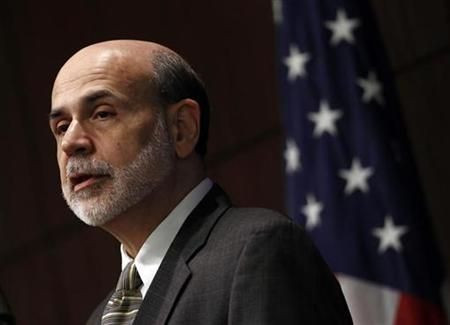What IHS predicts for US economy in 2011

The U.S. economy is on course to a self-sustaining recovery in 2011, aided by the private sector’s return to health and a further injection of fiscal stimulus, IHS Global Insight has said.
The report says business surveys continue to point to improving confidence, notably among small businesses and that hiring appears to be picking up and initial unemployment insurance claims are trending lower.
The IHS report, authored by chief U.S. economist Nigel Gault has also raised the research firm's forecast for U.S. gross domestic growth (GDP) in 2011 from 2.4 percent to 3.2 percent. It says GDP will grow 3.7 percent in the third quarter.
The following is the detailed report:
STRONGER GROWTH OUTLOOK
The private-sector recovery has gathered more momentum, and will get an extra kick in 2011 from a further injection of fiscal stimulus. The best recent news is that business and consumer confidence are improving, and that we seem closer to the long-awaited self-sustaining recovery, where employment and consumer spending move up together. In addition to that, we have more help from fiscal policy. Not only have the Bush tax cuts all been extended for two years (as we had assumed), but we have some extra stimulus through the two-percentage-point cut in the employee payroll tax rate for 2011, and a two-year extension of depreciation incentives for business investment (full expensing in 2011, 50% bonus depreciation in 2012). The combination of news has raised our 2011 GDP growth forecast from 2.4% to 3.2%. With stimulus effects fading again in 2012, though, growth slows to 2.9%.
IMPROVING BUSINESS CONFIDENCE
Business surveys continue to point to improving confidence as 2010 ends, notably among small businesses that have lagged behind during this recovery. Hiring appears to be picking up, and initial unemployment insurance claims are trending lower, implying that the weak November employment report was a downside aberration, not an indicator that the labor market recovery is stalling. Consumer confidence also seems to be turning gradually higher—notwithstanding a weak Conference Board reading for December. The most important indicator of consumer confidence is what consumers do, rather than what they say, and on that front the evidence is strong. We now expect real consumer spending growth of 4.3% in the fourth quarter (up from 2.4% in the third). That would be consistent with holiday retail sales up more than 5% year-on-year in nominal dollars, which would be the best result since 2005. This pace is unlikely to be sustained—all of the worries holding consumers back have not disappeared overnight—but we do expect consumer spending growth of 3.2% in 2011, up from 1.8% in 2010.
FOURTH QUARTER GROWTH
Overall, we expect fourth-quarter growth to come in at 3.7%, up from 2.6% in the third, and with a very different composition. Inventory accumulation should slow sharply, but (not coincidentally) we expect imports to drop at the same time, making foreign trade a big plus for growth. The trade boost will be amplified by the effects of an odd seasonal-adjustment pattern in oil imports.
HOUSING TO REMAIN DEPRESSED
Housing remains a key downside risk for 2011. Housing activity is still deeply depressed, and house prices have been declining again over the second half of 2010. There remains a fundamental oversupply, and we continue to pay the price for the homebuyer tax credit, which sucked sales into the first half of the year and temporarily propped up prices.
We anticipate a further decline in prices of around 5%. But housing plays a much smaller role in the economy than it once did, and we think that it would take a more severe price decline than we anticipate to re-ignite a financial crisis.
TRADE BOOST
Growth in 2010 was heavily reliant on the inventory cycle—growth in final sales accounted for only about half of the 2.9% GDP growth rate. In 2011, we expect both GDP and final sales to come in at 3.2%, as underlying momentum improves. Apart from the acceleration in consumer spending, we expect to see another strong year for business equipment spending growth (helped by the tax incentives), and also expect business structures spending to bottom out. Foreign trade should become a contributor to GDP growth, rather than a drag, as robust emerging-markets growth and a highly competitive dollar encourage export gains, while the maturing of the inventory cycle slows growth in imports.
FED TO STAY THE COURSE
Fed Expected to Stay the Course on QE II. Although the economy has improved since the Federal Reserve initiated its second round of quantitative easing in November, and more fiscal stimulus has been injected, we still expect the Fed to stay the course and implement the full $600 billion in extra Treasury purchases by mid-2011. We continue to assume no move to raise interest rates until 2012.
© Copyright IBTimes 2024. All rights reserved.




















